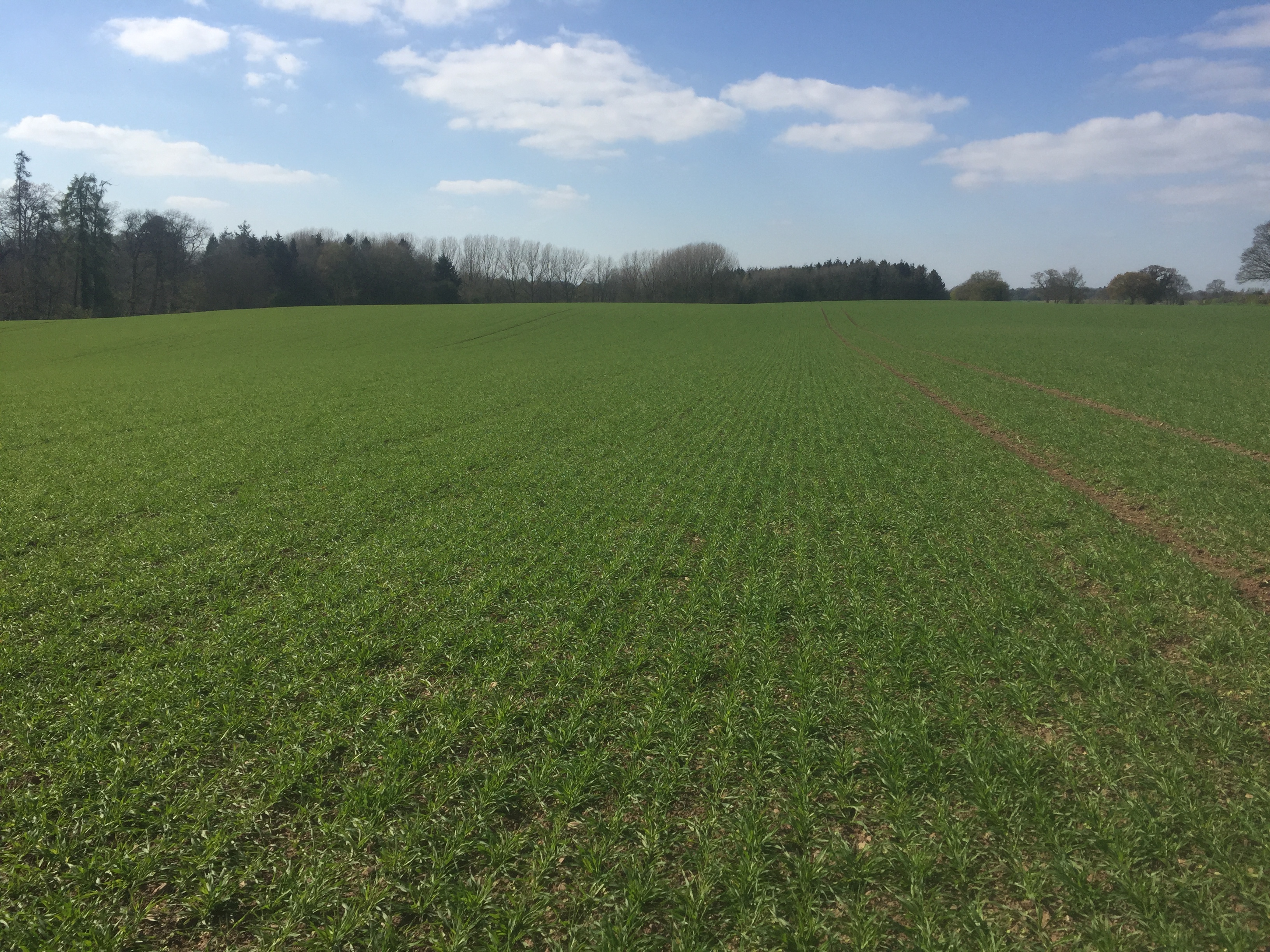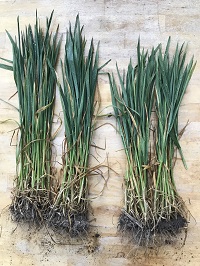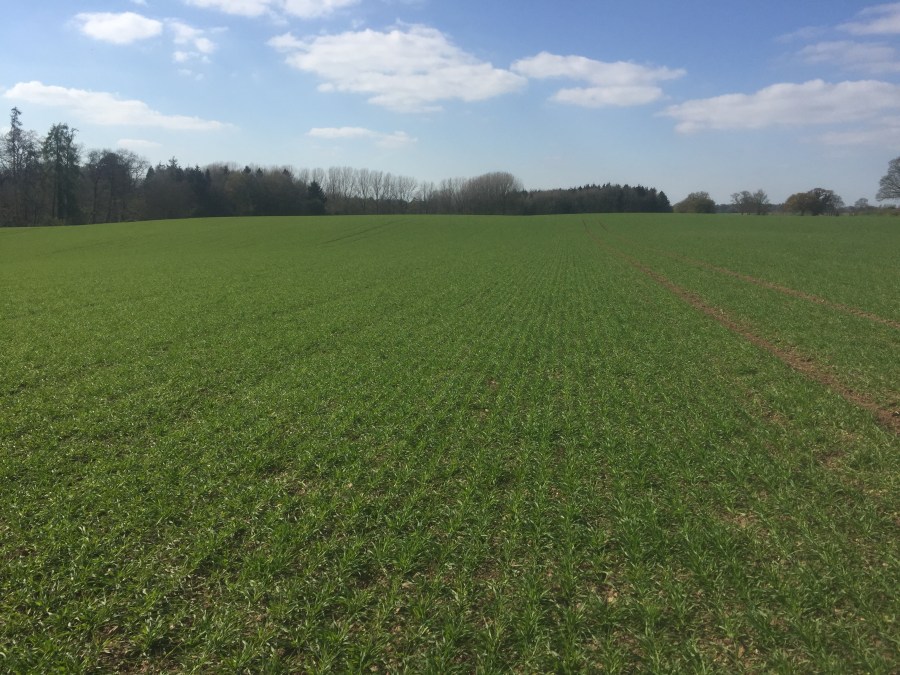Arable crops are facing further potential drought stress this summer – but biostimulants and foliar nutrition could be the answer to better yields and plant health. Whether used in combination with conventional crop protection products or individually in organic systems, they have been proven to work all over the world, and are now finding a place on UK farms.
By Olivia Cooper
“People are a lot more willing to have a look at foliar nutrition and biostimulants – we’re seeing many more farmers using foliar testing and pre-empting problems before they occur,” explains Bryn Thomas, agronomist at Spunhill. “We’re currently using Proplex on spring crops as it’s got a number of micronutrients as well as amino acids and a seaweed extract, both of which act as biostimulants.”
So how exactly does it work? “Proplex contains a highly concentrated extract of Ascophyllum nodosum, which has unique marine-based compounds that alleviate stress and stimulate growth in land plants,” explains Doug Chaplin, operations manager at Olmix-Micromix. “It is also high in natural plant amino acids which are essential for cell growth.”
However, what makes Proplex different to many other biostimulants is that it combines different groups of active ingredients. As well as seaweed and amino acids it also has humic and fulvic acids, which improve the plant’s ability to metabolise and translocate nutrients. In addition, it contains a range of macro and micronutrients and which have proven to keep crops growing even in extreme heat and drought.
“It’s shown to promote root hairs not just root length – and that is the active part of the root that takes up water and nutrients,” explains Doug. “Under stress conditions plants tend to start shutting down, but these biostimulants keep them growing for longer, ultimately boosting yield and quality.”
The product of 15 years’ investment into research and development, it is now proven to boost yields and plant health in over 25 countries and 1m ha of crops. Further research into its effects on heat and abiotic stress is being undertaken at Nottingham Trent University over the next two years, with the help of an £800,000 grant.

This is a picture of a late February sown crop of Laureate Spring barley. Had 0.35L/Ha Proplex + 3.0L 15% Manganese applied two weeks previous to this photo being taken.
So how does Bryn recommend using it? “On spring cereals I’m using Proplex little and often at low rates of 0.35-0.5 l/ha, and repeating every two or three weeks,” he says. “It often goes in a tank mix with other trace elements as needed, or if it fits in with a fungicide or herbicide application, as it makes the plant more robust against chemical or environmental stress.”
These low rates mean such applications won’t break the bank, notes Doug. “Micromix was one of the first to combine the power of different biostimulants and amino acids, and Proplex has been widely tested in different tank mixes. We know it works extremely well, boosting plant growth and resilience against disease, should the weather turn warm and wet later in the year.”
In winter cereals it’s best to apply at the three-to-four leaf stage – as soon as the plant has enough leaf to absorb foliar applications, says Bryn. “It’s good to get the crop growing away quickly and boost root growth. I’m definitely going to use Proplex on fodder beet this year – as soon as you can get in with the first true leaves, and then with every herbicide application.”
Bryn has been carrying out a lot of tissue analysis on farms, which has thrown up nutrient deficiencies this spring, particularly in magnesium, zinc and boron, which are essential for growth and fertility. “We’re looking at using foliar nutrients including manganese, magnesium, zinc and copper alongside the biostimulant. The advantage of foliar application is that you get rapid uptake and target nutrients straight into the leaf in a bio-available formulation.”

Treated vs untreated Dickens wheat.
The treated had 3 applications of 0.75 l/ha of Proplex in autumn, T0 and T1.
Magnesium deficiency is showing up in a lot of recent analysis, and it will be important to address this as it is key for chlorophyll production and photosynthesis, he warns. “Boron – often considered important for oilseed rape and sugar beet – I think is a hidden hunger, and in cereals is vital for fertility and ear formation. It’s important to get the balance right as in high levels it is phyto-toxic. That’s where tissue testing proves its worth – rather than blanket application you know that you’re doing the right thing.”
Although the dry weather eased some disease pressure this spring, it’s important not to cut back on fungicide use, as conditions can rapidly change and the fungicidal activity now relies much more on prevention than cure, says Bryn. “Adding a biostimulant can help to elicit the plant’s own defence mechanism and work in conjunction with fungicide applications.
“We’ve been doing split field trials looking at yield and crop health with biostimulants and the science backs them up. As we lose more pesticide active ingredients we’re going to have to do more to look after plant health and last year we found biostimulants like Proplex helped alleviate drought stress. It will be interesting to see how this year’s winter wheat trials yield – it looks like the treated crops have been more tiller-retentive compared to standard trace elements.”
Grain, seed and fertiliser merchant Paul Towns says demand for biostimulants and foliar nutrition has soared in recent years. “One by one inorganic products are having their licences withdrawn – there are 14 actives being banned by June 2020. So we have to improve plant health to make them less susceptible to fungal attack. With that, alongside the increasingly dry weather, we’re seeing sales of foliar micronutrients and biostimulants increase sharply.”
In eastern England, the dry weather meant many cereals weren’t drilled until the end of Apr or early May, and applying 0.5-1 l/ha of Proplex will help crops get their roots down and grow away, he adds. “We’re also encouraging growers to use it when establishing oilseed rape – applied at the two-leaf stage mixed with foliar nitrogen it will encourage the crop to grow away from any flea beetle challenge. With the neonicotinoid ban it’s important that growers find alternative methods to adopt.”
Sales are doubling year-on-year as farmers look for proactive ways to boost plant health and resilience in the absence of chemical actives, adds Paul. “Once producers try our biostimulants – which are developed in association with Micromix and sold under our Cropwell brand – we never lose a customer. Any fool can get a molecule of nutrient on a plant leaf, but it needs to be in the right formulation so you get active uptake. It also needs to be a good in a tank mix – by using the right formulation we’re enabling a healthier plant and improved efficiencies all round.”
- For more information visit micromix.com.




